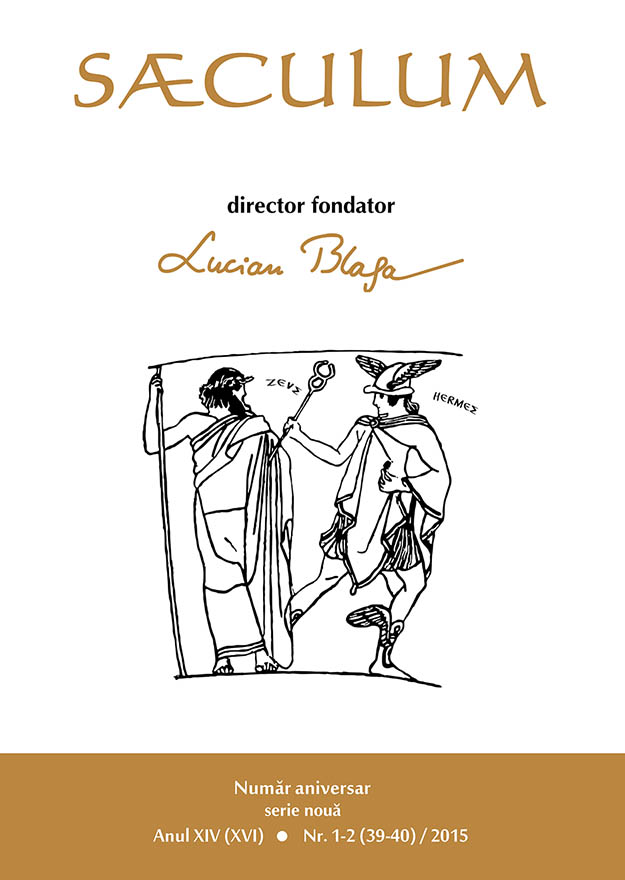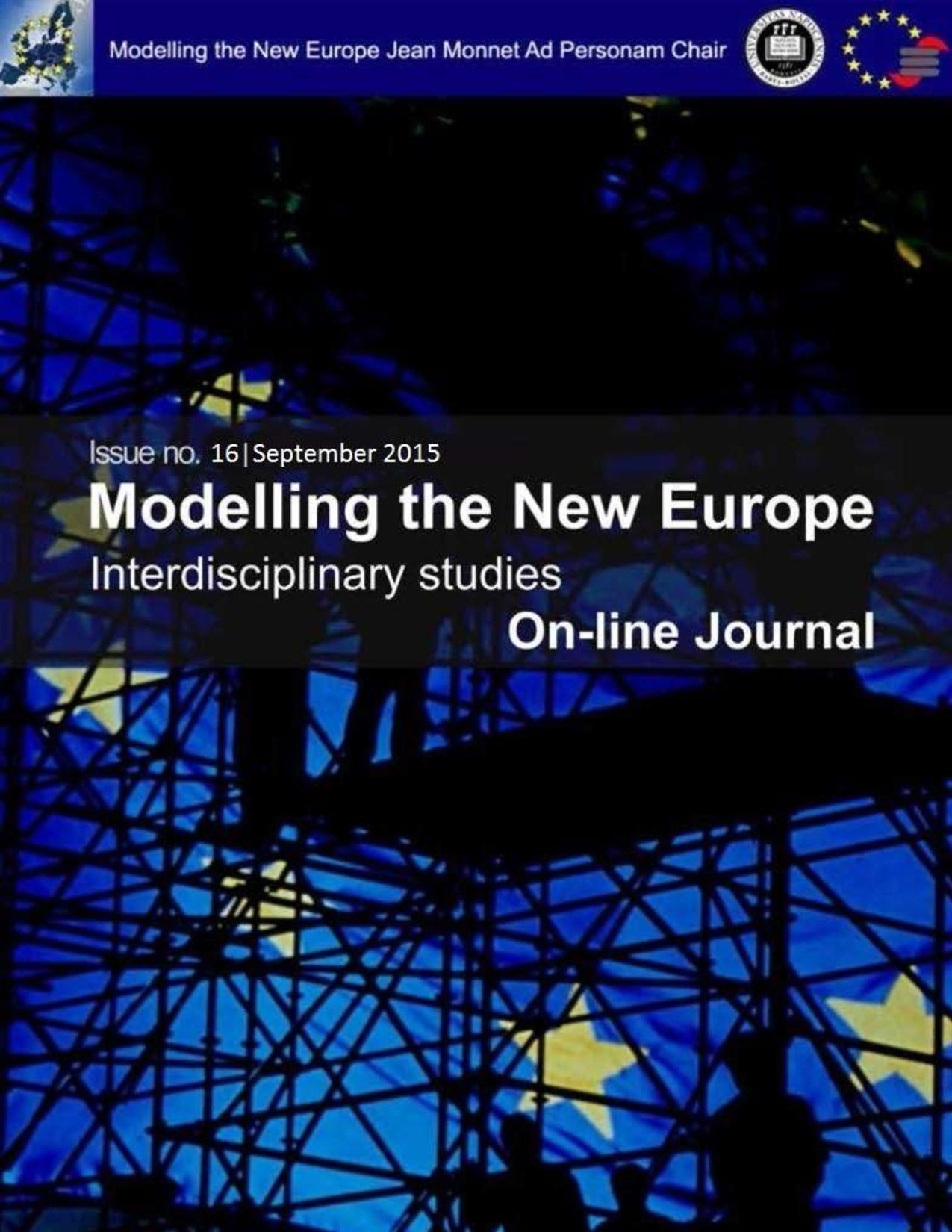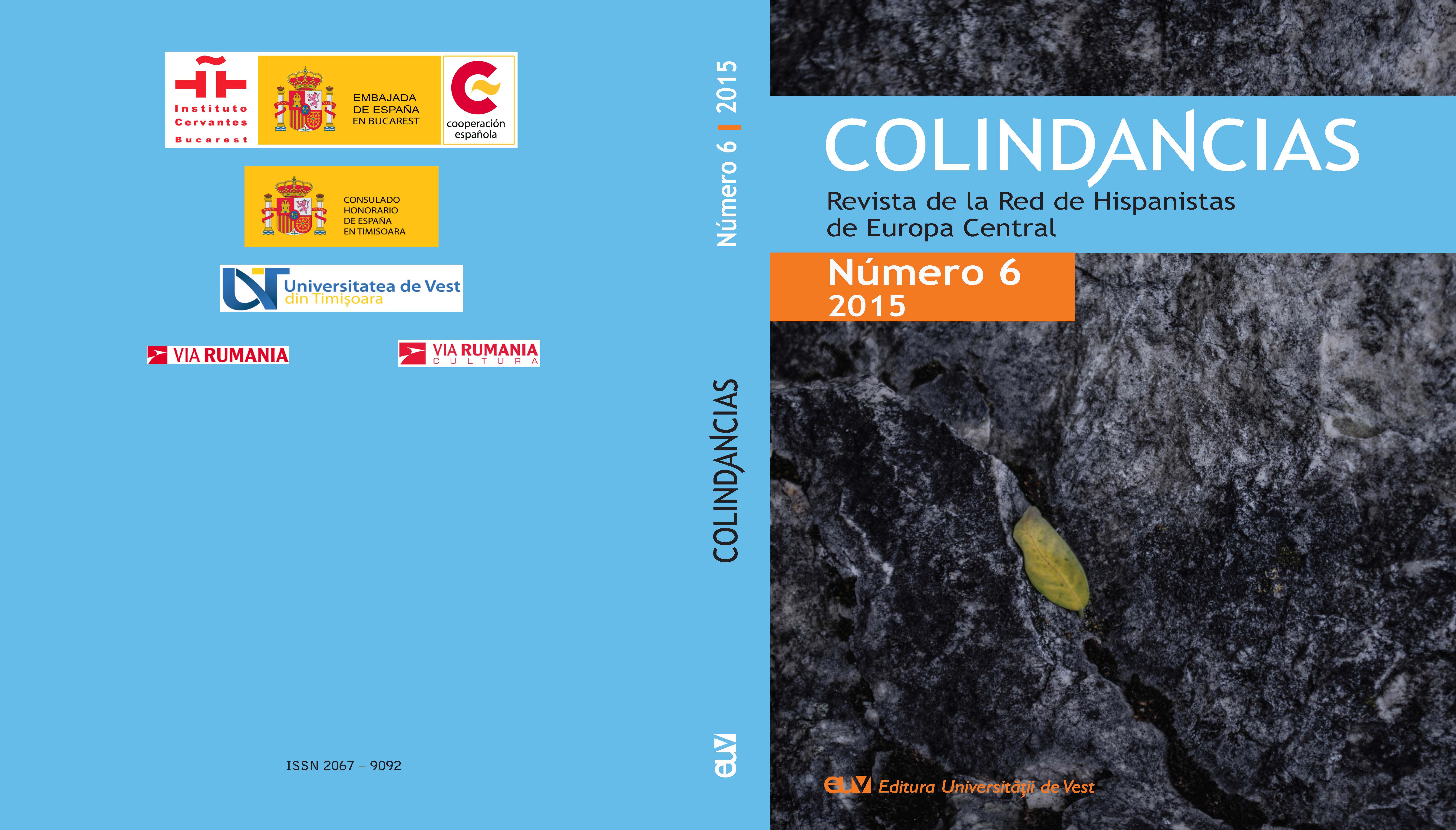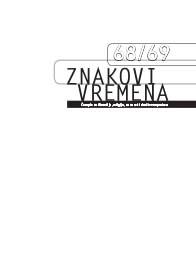
We kindly inform you that, as long as the subject affiliation of our 300.000+ articles is in progress, you might get unsufficient or no results on your third level or second level search. In this case, please broaden your search criteria.


SMEs play a significant role in economic activity. They ensure a large percentage of the employment and contribute to a great extent to the economic growth and development of the EU and its Member States. However, ensuring financial resources for SMEs and for their own development it is not always easy to achieve. And it is much more difficult for SMEs to attract financial resources compared to the large companies. SMEs in the EU usually rely on banks in order to get loans and other types of financing. However, the last economic and financial crises proved that bank lending to SMEs may not be considered as the only viable solution for financing their activities. It became much clearer that other alternative resources of financing shall be promoted and most notably these alternatives shall be derived by the EU capital markets. Capital markets financing of SMEs is complementary to the bank lending. It may provide for more diversified resources and not replace completely the role of the banks. This paper looks at the barriers of SMEs in finding financial resources at affordable costs. Then it presents the new EU initiative on building a Capital Markets Union and how it will amend the perspectives of SMEs on finding more easily and at better price financial resources in the future. It presents also the other EU initiatives and measures that aim to boost financing to SMEs. Financing of SMEs will never be a simple task but if capital markets learn to play a greater role this task may become much more easy and affordable.
More...
This paper is part of the research project VEGA 1/0853/14, which studies the particularities of the Slovak reception of Cervantes’s novel Don Quixote of La Mancha. The author introduces and comparatively analyses an interesting case of this reception, a work which was one of the first parodic recreations of Cervantes’s novel in the cultural context of the Kingdom of Hungary: Bendeguz, Gyula Kolompos und Pista Kurtaforint (1841), a satirical novel written by Slovak playwright Ján Chalupka (1791-1871). The fact that it was published in Leipzig in German language facilitated its reception in the German-speaking area. What’s most interesting is that the author subtitled the novel: Eine Donquixottiade nach der neuesten Mode, assuming that Cervantes’s novel was known in the Central European cultural space in the first half of the nineteenth century.
More...
Here is the question: are religious and political dialogues in danger or are we trapped by identity fiction? The identity fiction is as equally dangerous as identity crisis. Nationalism, chauvinism and ethnicism are emotional and identity fictions that negate the power of productive thoughts and which, in confronting power, are used as means for inducing crises and tensions. By creating fiction and wrong perception more than earlier we depart from our essential identity thus creating interspace and void between ourselves and our essential identity. In this confusion of thoughts, we cannot clearly tell our nationality, history, religion or politics. We see religion as rites and traditional values and hence we actually part with religion and its values and subsequently with essential religious beliefs and experience. Or as Dariush Shayegan would say: “We are children of intervals of time, found in interspace of inter-presence of gods and their imminent death.
More...
En este trabajo se intenta presentar el diálogo que entabla el autor chileno Nicanor Parra en su libro Poemas y antipoemas con la poesía nacional que precede a la suya propia, así como con la poesía tradicional y con distintos tipos de discurso público en sus obras posteriores. Se indagan las posibilidades de preservar en las traducciones a otros idiomas la actitud general, así como la mayor parte de la relectura y reescritura que Parra hace de ella.
More...
Having in mind the manners of their creation and author’s communication with the recipient, the earliest gnostic papers writen in Persian from the first half of the XI century communicate with the recipient in the imperative mood and place him/her in the center of the communication act, thus requesting active participation in the reading process. They allow the recipient to establish and build its unique relation with the text, based on cognitive reading and “eavesdropping” of the essence of meaning, which will “move” him/her from the exoteric to the esoteric plane of reading, and transform him/her from a “passive reader” to an “active listener”. Thus, a gnostic text uses the necessity of its timeless and universal content to demand from the recipient to go back repeatedly, in which every next visit will encourage the recipient to build a new and unique and perceptive-experiential relationship with the text.
More...
Microquixotes is an anthology of Hispanic short-short stories (published in 2005) that somehow interpret the theme of Don Quixote of Cervantes. The objective of the paper is to analyse some of the texts of the book, written by Argentinean authors, set the main lines of reinterpretation in the texts in question, and come to a conclusion about the nature of these postmodern versions of the novel.
More...
The title of this scientific work “NATIONAL SECURITY SYSTEM OF BOSNIA AND HERZEGOVINA” implies in itself an important concept which is a system of national security of a country in the case of Bosnia and Herzegovina. We live in an era of globalization, the great technical, scientific and technological development where interaction and communication between people as the members of different cultures and civilizations have reached a very high level, and these are all factors that multiply the security challenges for the state and the security systems at the beginning of the new millennium. In this scientific work there is an attempt to answer the question to what extent a system of security has been built and what problems stand in the way of its further development and construction. Taking into consideration the complexity and danger of the problem of terrorism at the beginning of the XXI century, it is necessary to objectively assess and point out all the possible mistakes and shortcomings of security of Bosnia and Herzegovina and work to increase its efficiency. It contributes to the fact that Bosnia and Herzegovina is a very complex formed state (with two entities and Brcko District), with great political influence in making decisions important for the normal functioning of the state and its security system. Also, it has recently emerged from the severe armed conflict that ravaged its economic, social and security capacities, which is a major problem in the process of building the state and its security system.
More...
The contemporary urban chronicle covers quixotic perspectives because it is interested to show that reality is fragmented. In the crónica the themes are often quixotic because it is interested in eccentric characters, improbable activities, in addition to the inevitable violence of the Latin American reality.This paper explores how some quixotic perspectives are represented in current crónicas of Martin Caparros, Leila Guerriero, Juan Gabriel Villoro and Wiener.
More...

Abstract: Through a narrative technique of using multiple focalizers who perceive different reflections of the same reality surrounding them, José Donoso in his short novel Hell has no limits (El lugar sin límites, 1966) introduces his reader into an apparently confusing and fragmented narrative world. Each character-focalizer shows the story from a point of view determined by his past and present life, which causes their narrations to be extremely subjective. Nevertheless, as a whole the different versions of the many unreliable focalizers of the novel are able to create a coherent and reliable narration, reflecting that human perception is and only can be subjective, but by combining various subjective points of view it is possible to get to know a much more real reality compared to the one we could see through the narration of an exclusively omniscient narrator.
More...
Abstract: The Costa Rican author’s latest novel, El ingenio maligno (2014), is announced to be the second part of a trilogy, the first book of which, El genio de la botella (1990), was structured in a very similar way. In both novels, the narrative situation is the same, in that they are dialogues between the genie and a dog. However, while in the first case, the oral tradition of the miracle tales is emphasized, in the second, the stories of the chapters are rewritings of texts about the origins of the universe. Thanks to the conversation between the main characters, we are able to travel through cultures and literatures of the world, from the Book of Genesis and the fundamental classical myths (such as Narcissus or Oedipus), to Kafka’s universe. In the twelfth chapter we even meet Don Quijote and Sancho Panza, and we are about to play with reality and appearance. In this article I am basically interested in Rafael Ángel Herra’s narrative techniques, in the way he can manage to connect the only slightly related multi-layered intertextual fabric with the clear purpose of building a novel about the act of creation itself.
More...
Abstract: During the 19th century there have been found so far very few documents concerning the work and personality of Fernando de Herrera (1534-1597), and basically there are two sorts of texts. One sort was written by Herrera’s conational citizens, who identified him as the most important poetic authority for Andalusia’s nationalism. The second was authored by French positivists who saw Herrera’s poetry as revealing an unprecedented type of amorous passion featuring a both ridiculous and grandiose mysticism. By the end of the 19th century, Menéndez y Pelayo, by virtue of his Iberian casticismo, invests Herrera with the grand title of the first Spanish literary critic. The next pages focus on these main lines of reception.
More...
Abstract: To modernist and avant-garde art the utopian as well as anti-utopian visions represent a manner of reacting to a time of crisis by offering divergent images of the present or of not so distant a future. In this article we choose to discuss the way in which utopian and anti-utopian ideas on life and art get reflected in the short narrative of some of the most important 1927 Spanish generation of prose writers, especially those who started their career following the aesthetic line traced by the philosopher José Ortega y Gasset. We are referring to Antonio Espina, Rosa Chacel, Francisco Ayala and Benjamín Jarnés. We will take into account their artistic believes and will approach the formal aspects and the basic constituents of the fictional worlds each one of them constructs in their short-stories published between 1926 and 1929. The main focus will deal with concepts like hybrid genre, lyrical introspection through myth and metaphor, negative themes, ambiguous significance that points to a disillusioned, dystopian approach to reality.
More...
Abstract: The short stories of Juan José Millás, published in the volume Articuentos completos (2011), are considered atypical not only because of their mixed or hybrid genre, but also by reason of their unusual approaches, as they offer a break with the traditional way of seeing reality and discovering other dimensions of the human existence. The Spanish author's articuentos tell us about simple, everyday things with a few words. At the same time, despite this apparent sincerity, his stories, due to the great variety of intertextual references, fantastic elements and some humour and irony, and also to the many forms and unusual positions applied by the author, are able to reflect the complicated process of everyday human existence and to demonstrate the complexity of their conscience.
More...
Abstract: The widely accepted idea according to which there is an intricate connection between irony and the modern novel was theorized at the beginning of the 20th century by Georg Lukács in his work The Theory of the Novel and reanalysed at the end of the same century by Milan Kundera in The Art of the Novel. This view of the modern novel as essentially ironic allows, however, certain reviews. In the first part of this article we will point out the terminological confusion that derives from the use of the word irony with two different meanings: one of them referring to the romantic irony, in Lukács’s case, and the other one to the postmodern irony, in Kundera’s case. In the second part of the article we will briefly discuss Wayne C. Booth’s work, The Rhetoric of the Irony, which intends to limit the excessive use of this concept in the context of novel criticism and theory.
More...
Abstract: This article aims to analyse some of the most relevant metaphors present in the second part of Don Quixote from the verb metaforein’s broadest etymological value, i.e. 'transport', 'translation' or 'transmutation'. The study is based on three main pillars: first, the geographical displacement, which includes elements such as the aesthetic value of the space; second, the diachronic movement, present in reminiscence and especially the revival of some historical periods, which can be recognized in the chivalric codes or multiple allusions to the classical world (for instance through heroes, texts, myths or places); and finally, the pillar of the transposition of lexical semantics, either the one concerning Cervantes specifically or the one influenced by different factors, such as philological or ludic implications and the narratologic intentionality arising from the fact that we are before a text supposedly translated from Arabic.
More...
Abstract: Following the Cognitive Theory of Figurative Language (Dobrovol'skij and Piirainen 2005), this article analyses the background of the metaphoric symbolic motivation of fish in Chinese culture, from a cultural and historical perspective, focusing on the figurative vocabulary, idioms and proverbs, comparing with Spanish. Throughout the history, the fish has played an important role in the Chinese culture, since it has always been a basic and common food in China. Obviously, these metaphoric images are found in poetry and phraseological units, whose figurative components reflect its cultural symbolism. Based on the collected data, it has been showed that the fish embraces various symbols, such as wealth, happiness, a beloved person, and the benefit. Besides, the images of fish are applied extensively in many areas, such as in loving relationship, situations, concepts of value and suggestions, all of them reflecting vividly the folk wisdom of both countries.
More...
Abstract: The Spanish Golden Age (Siglo de Oro) is a very important period in the history of Spanish language. It is the time when medieval and pre-classic Spanish turns into modern Spanish. In the Golden Age linguistic and literary consciousness are in close relationship: literature plays an important role in reflecting the splendour, prosperity and richness of the national language. The subject of this article is a linguistic change in process in the 16th-17th centuries, the variation and fixation in the use of the personal pronouns tú and vos, and the verb forms that accompany these pronouns. In order to emphasize the connection between language and literature, linguistic phenomena are documented with examples from literature.
More...
Abstract: The nineteenth century is a very interesting period regarding the situation of women in the whole of Europe, because various movements of female emancipation and political and social debate on women were initiated everywhere. This issue has been reflected in the Spanish literature of the time, especially in the realistic and naturalistic novel where women were main protagonists. The novel La Regenta and the novella Doña Berta by Leopoldo Alas Clarín are good examples of feminine imagery of the famous Spanish writer. Taking into account the female social vision of that time, and the theories of Michel Foucault, which are presented in his studies Discipline and Punish (1975) and The History of Sexuality (Volume 1): The Will to Knowledge (1976), the present article analyses in the selected corpus the literary discourse of social oppression of Spanish women during the nineteenth century, men's monitoring, the concept of the Panopticon, the social discipline and the (im)possibility of females both to fulfil their own sexuality, and to satisfy their urges, personal desires, and gain the desired freedom.
More...